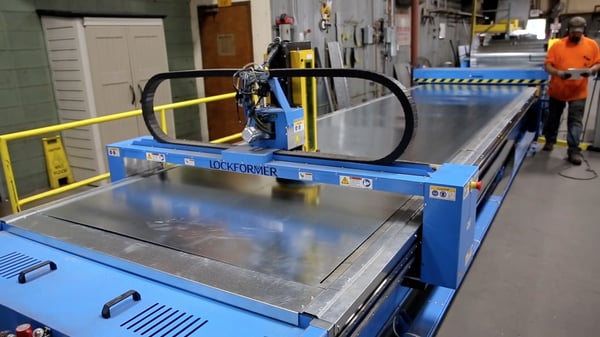Fiber laser cutting systems, as we know them in the HVAC duct and fittings fabrication industry today, went through a few iterations before they found their way into the industry. The development of the fiber laser for light gauge sheet metal and HVAC duct and fittings fabrication actually has a long and interesting history filled with innovation and design development hurdles that had to be overcome. In this post, we'll discuss how today's fiber laser cutting systems came to be in the HVAC duct and fittings fabrication industry.
Early HVAC Laser Cutting
Initial laser cutting in the HVAC duct and fittings fabrication industry actually started in the early 80s, but because of issues with technology, as well as other factors, it didn't take off at that time. In the 80s, a scribing machine was being produced by CTI Construction Technology which then had a laser added to the table to cut the nested fittings it scribed the patterns onto. With the addition of the laser, these tables were a large investment of about $400K. However, the laser technology was not very advanced and would often crash. Laser cutting all but disappeared from the industry until the early 2010's, when the technology was finally able to catch up with the concept.
Modern HVAC Fiber Laser Development

Today's fiber lasers were developed for the light gauge sheet metal industry. With the safety of working with a laser as a large concern, safety circuitry and a shroud to enclose the cutting head had to be built into the machinery. If the shroud comes off the metal within the 16th, the whole machine shuts down. This had to be approved by OSHA, which adheres to FDA guidelines as well. Once the fiber laser was awarded an FDA accession number, the machine could be brought to market.
Another key to the development of the modern fiber laser is the innovation of open architecture that allows the machine to be coil fed. Most other laser systems are sheet extractors with enclosures (closed architecture) that are burning the whole sheet and only then eject the parts. The fiber laser, in contrast, allows the operator to interact with cut parts while the machine is still cutting other parts.
There are a wide variety of reasons why a sheet metal contractor, duct fabricator, or a mechanical contractor in the light gauge sheet metal industry might choose a fiber laser cutting table for their operation today. The Lockformer Vulcan Fiber Laser Cutting System, in particular, produces a clean cut in the material that causes less wear to downstream fabrication equipment, along with many other benefits that can increase your efficiency and profitability. As you evaluate if a fiber laser or any other piece of equipment is right for your operation, always remember to keep your operation's needs and objectives in mind.

